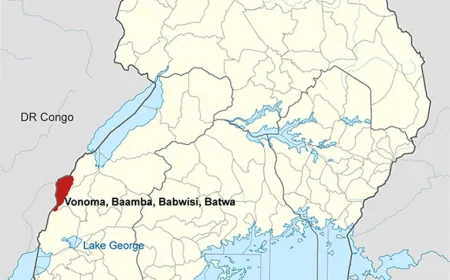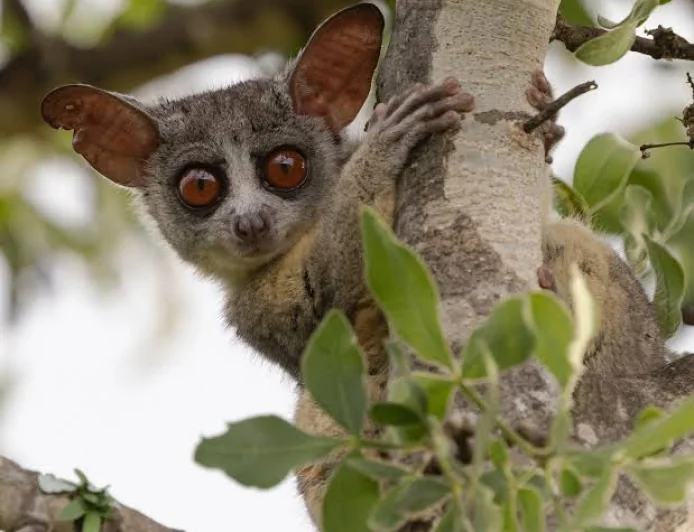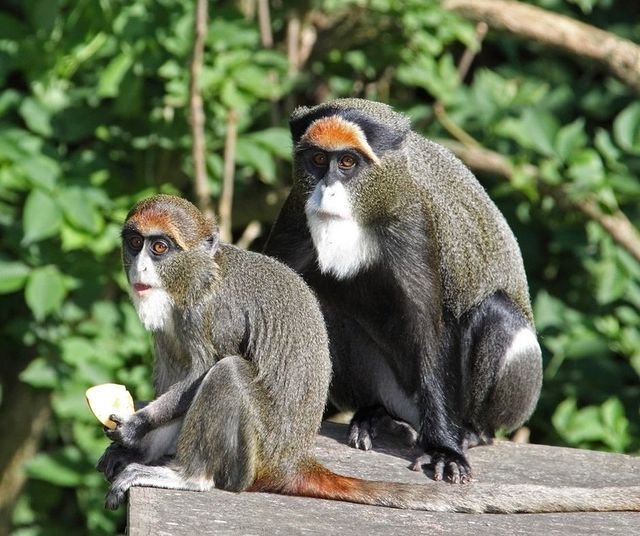Vervet Monkey
The vervet monkey is a black-faced primate that ranges in size from medium to giant and can be found in four different subspecies in Uganda. They can be found all over the country of Uganda, even outside of the country's protected national parks, though they are not found in the interiors of forests or in Afro-alpine regions.

The vervet monkey, or Chlorocebus pygerythrus, is a species of Cercopithecidae that is endemic to Africa. A vervet can also be any member of the genus Chlorocebus.
The most populous monkey species, widespread distribution, and the only guenon you're likely to see outside of Uganda's woods.
The females of these primate species are about 40 centimetres (16 inches) long, and the males are about 50 centimetres (20 inches) long. Their faces are black, while their body hair is a greyish colour.
Vervet monkey Behaviour
When they attain sexual maturity, males leave their own group and join one of their neighbours'. Guys often move in groups to protect themselves from hostility from both men and women in the community. Upon the entrance of a new male, groups that have previously transferred males are much less aggressive than those that have not. Males often move to neighbouring groups. This makes them easier to get to, but it also reduces genetic diversity and makes it more likely that they will breed with each other.
Monkey babies spend their first week of life clinging to their mother's stomach. By the end of their third week, they can move around on their own and play with other monkey babies.
The females never leave their communities. Each gender has its own distinct hierarchy of power. When it comes to males, social standing is established by factors including age, length of service, combat prowess, and alliances, but for females, it depends on maternal social position. Most contacts take place between people of similar social status and familial ties.
Aggression within groups is typically directed at those lower in the social order. As a general rule, the likelihood of someone getting into a fight increases dramatically after they reach the age of three.
Vervet monkey Diet.
Leafy greens, new shoots, bark, fruit, flowers, bulbs, grass, roots, seeds, and nuts are all staples in a vervet monkey's diet. They add insects, eggs, grubs, birds, and even rodents and hares to their otherwise vegetarian diet.
vervet monkey Reproduction.
There are no outward indicators of estrus in female vervets, so complex social activities involving reproduction are not observed. A woman usually gives birth once a year, sometime between September and February, following a 165-day pregnancy. Rarely do two babies enter the world at once, although it happens all the time.
A Variety of Vervets Can Be Seen in Uganda.
The green monkey, the tantalus monkey, the savanna monkey, and the grivet monkey are all other names for the vervet monkey. There are more than twenty identified races, and some experts classify them as four separate species.
Uganda is home to at least four distinct species of vervet monkey:
- The vervet with the black face (C. a. centralis),
- It was a vervet monkey in Naivasha (C. a. callidus),
- C. a. marrensis (the Jebel Mara tantalus) and
- Stahmann's green monkey (C. a. stuhlmanni).
Check out these locations in Uganda to see vervet monkeys!
Even outside of protected areas, vervet monkeys can be found across Uganda. However, they are not found in the interiors of forests or in Afro-alpine regions.
What's Your Reaction?
 Like
0
Like
0
 Dislike
0
Dislike
0
 Love
0
Love
0
 Funny
0
Funny
0
 Angry
0
Angry
0
 Sad
0
Sad
0
 Wow
0
Wow
0












































































